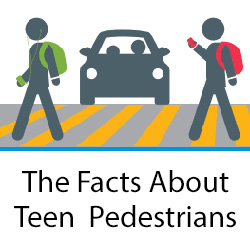Ensuring the safety of children around school zones has always been a paramount concern for parents, educators, and city planners. One of the most effective measures implemented to enhance this safety is the installation of speed bumps. These physical road features compel drivers to slow down, thereby reducing the risk of accidents. As we look to the future, it is crucial to explore how speed bumps will evolve and what role they will play in creating safer school environments.
The Current State of Speed Bumps in School Zones
Effectiveness and Challenges
Speed bumps, also known as speed humps or sleeping policemen, have been widely used to control vehicular speed in critical areas such as school zones. Their effectiveness is well-documented. By forcing drivers to reduce speed, speed bumps significantly lower the likelihood of severe accidents involving pedestrians, particularly children who are often less cautious and more unpredictable near roads. However, speed bumps are not without their challenges. Emergency vehicles, for instance, can be delayed by the presence of speed bumps, potentially leading to life-threatening situations. Additionally, improper design and placement can cause damage to vehicles or discomfort to drivers and passengers. There are also concerns about noise pollution in residential areas due to vehicles braking and accelerating at speed bumps.Advances in Speed Bump Technology
Technological advancements are addressing some of these challenges. Modern speed bumps are designed with materials that provide a balance between durability and vehicle comfort. Some speed bumps are even equipped with sensors that detect the speed of an approaching vehicle and only elevate if the vehicle exceeds the speed limit. This smart approach ensures that drivers adhering to the speed limit are not unnecessarily inconvenienced.The Future of Speed Bumps: Innovations and Integration
Smart Speed Bumps
The integration of technology into road safety measures is paving the way for smart speed bumps. These devices can adjust their height and firmness based on the speed and type of the approaching vehicle. For example, emergency vehicles equipped with transponders could trigger the speed bump to lower, allowing for an unhindered passage. Smart speed bumps can also be integrated with traffic management systems to collect data on vehicle speeds and traffic patterns. This data can then be used to optimize traffic flow and improve road safety measures further. For instance, if data shows frequent speeding during certain times, additional measures like increased patrols or more prominent signage can be implemented.Dynamic Speed Bumps
Dynamic speed bumps are another exciting development. These speed bumps use materials like liquid polymers that change shape in response to the speed of a vehicle. At lower speeds, the bump remains raised, but as the vehicle speed increases, the material compresses, reducing the bump’s height. This innovation ensures that speed bumps are effective without being overly intrusive or damaging to vehicles.Eco-Friendly Speed Bumps
Sustainability is becoming a critical consideration in all aspects of urban planning, including road safety. Eco-friendly speed bumps made from recycled materials are gaining popularity. These speed bumps are not only environmentally friendly but also cost-effective. Some designs even incorporate solar panels to power integrated lights or sensors, adding an extra layer of visibility and safety.Integrating Speed Bumps with Other Safety Measures
Comprehensive Safety Plans
The future of school zone safety lies in comprehensive, integrated safety plans that combine multiple measures to protect children. Speed bumps will continue to play a crucial role, but they will be part of a broader strategy that includes:- Enhanced Signage: Clear, visible signs warning drivers of upcoming school zones and speed bumps.
- Pedestrian Crossings: Well-marked and, where possible, raised pedestrian crossings to ensure children can cross safely.
- Traffic Calming Devices: Additional devices like speed tables, chicanes, and roundabouts to slow down traffic naturally.
- Community Involvement: Programs to educate drivers and local communities about the importance of road safety near schools.

